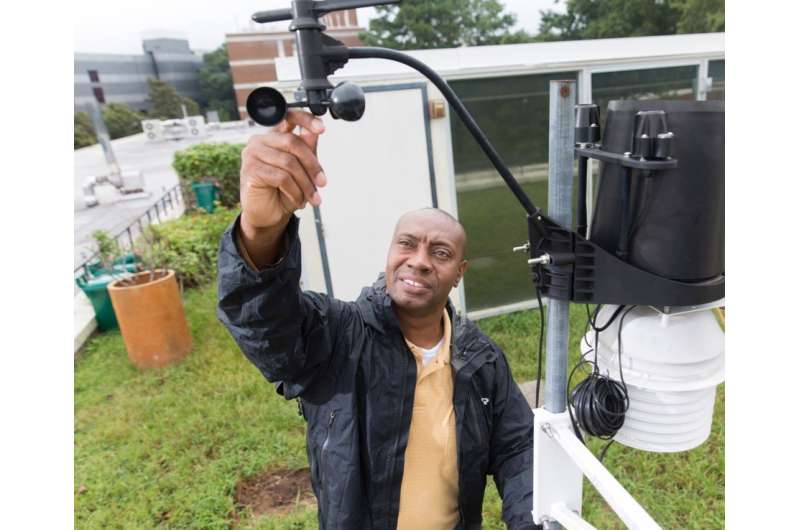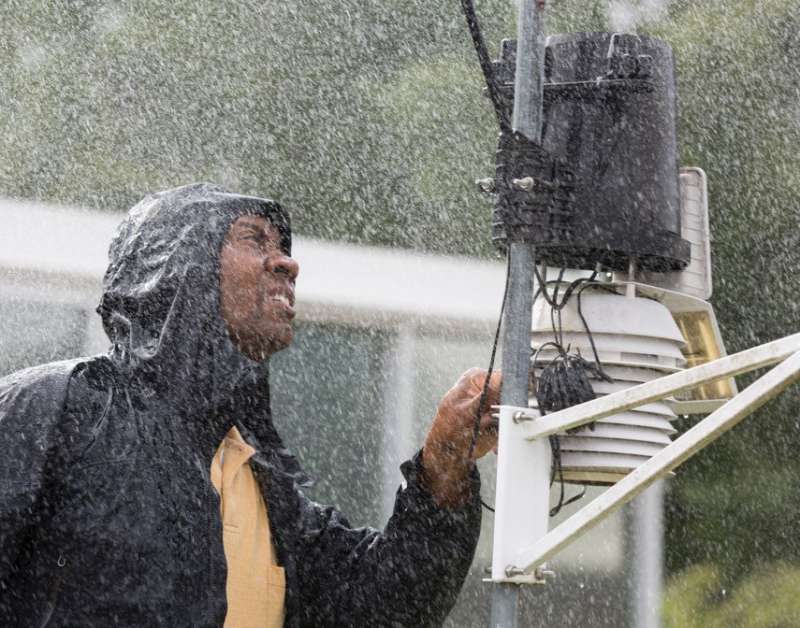Planning for hurricanes

Rainstorms in 1960 look different from those in 2017, both in terms of intensity and rainfall.
It's a simple observation, but one with long-term effects on how cities are equipped to handle weather systems. For Marshall Shepherd, director of the University of Georgia's Atmospheric Sciences program, this is one of many pieces of critical information city leaders need as they examine how their communities and living spaces interact with their region's unique climates.
We're all aware of the impact of intense weather systems that make headlines, like 2017's hurricanes Harvey and Irma. But even slight adjustments to weather patterns—like historic changes in precipitation levels and the increasing frequency of heat waves—can drastically change living conditions.
Shepherd's research into urban flooding, for example, shows how outdated assumptions can have detrimental consequences, and his work on a National Science Foundation-funded project to bridge the gap between city planning and weather-climate communities was an important step in the right direction. In conjunction with the Georgia Water Resources Institute, Shepherd and his team are looking at weather pattern trends to determine how vulnerable to flooding people are in certain cities. And as more people flock to urban centers, these research findings are informing the important decisions made by city planners and policymakers.
"Our work has a direct impact in understanding how we need to think about planning to cope with increasing amounts of rain," he says. "Our storm management systems are currently designed for last century's rainstorms, under the stationary assumption that rainstorms look the same now as they did a few decades ago. We help city planners and policymakers understand how they can be updated."
Shepherd and his team are also taking a look at how cities can prepare for climate conditions beyond flooding and other extreme weather events. Published in 2015, Georgia's climate vulnerability index is a collection of data from every county in the state that examines the frequency of floods and heat waves, the percentage of impervious surfaces, and the number of vulnerable populations. Taken together, this information provides a detailed picture of which counties are most at risk from climate change and why. Shepherd credits the state's unique climate for the wide range of data points he and his team are able to collect.
"The Southeast, particularly Georgia, experiences the full range of weather events, from heat waves, to droughts, to hurricanes, to tornadoes, to flooding," he says. "Having expertise here, at the university, gives us the opportunity to study extreme weather, its causes and its implications on society."

This is particularly relevant for Shepherd's critical research on the Brown Ocean Effect, a term coined at Georgia. In a series of papers, the Georgia team described how tropical cyclones can intensify or maintain strength as they move inland as a result of wet soils, irrigation or wetland interactions. Partnering with NASA to use satellites and climate models, he and his team are gaining further insights into this phenomenon and how it might influence future hurricane systems.
And as with flooding research and the climate index project, this research puts critical information into the hands of key decision-makers who are orchestrating the future of city planning.
"Droughts, hurricanes and ice storms are natural processes that are likely being altered by human processes like carbon emissions or urbanization, and we need to understand them," Shepherd says. "My mission is to make people understand that extreme weather and climate change aren't just about polar bears; it's about the cost of breakfast cereal, a child's vulnerability to new diseases and the economic vitality of the state."
Provided by University of Georgia
















